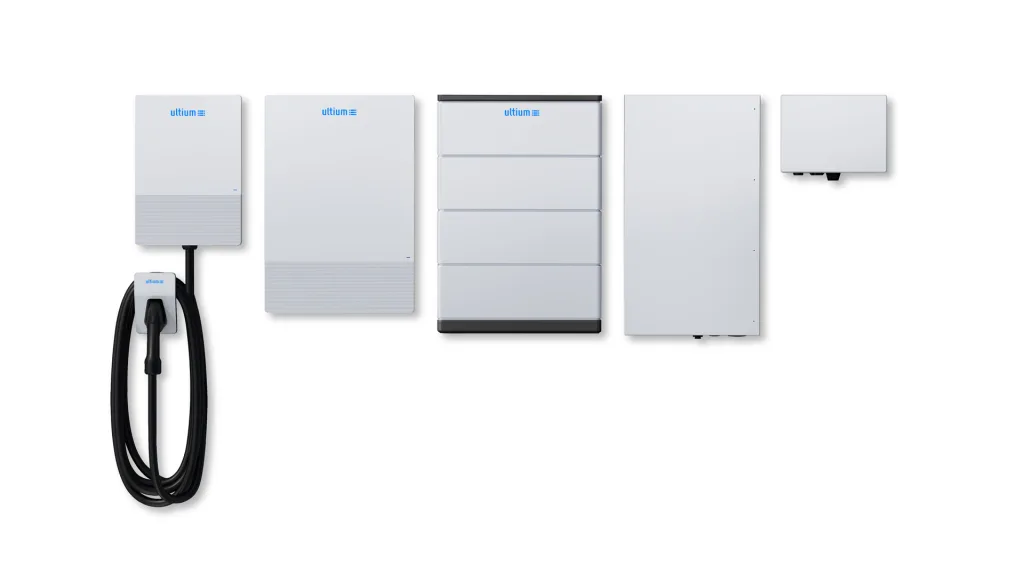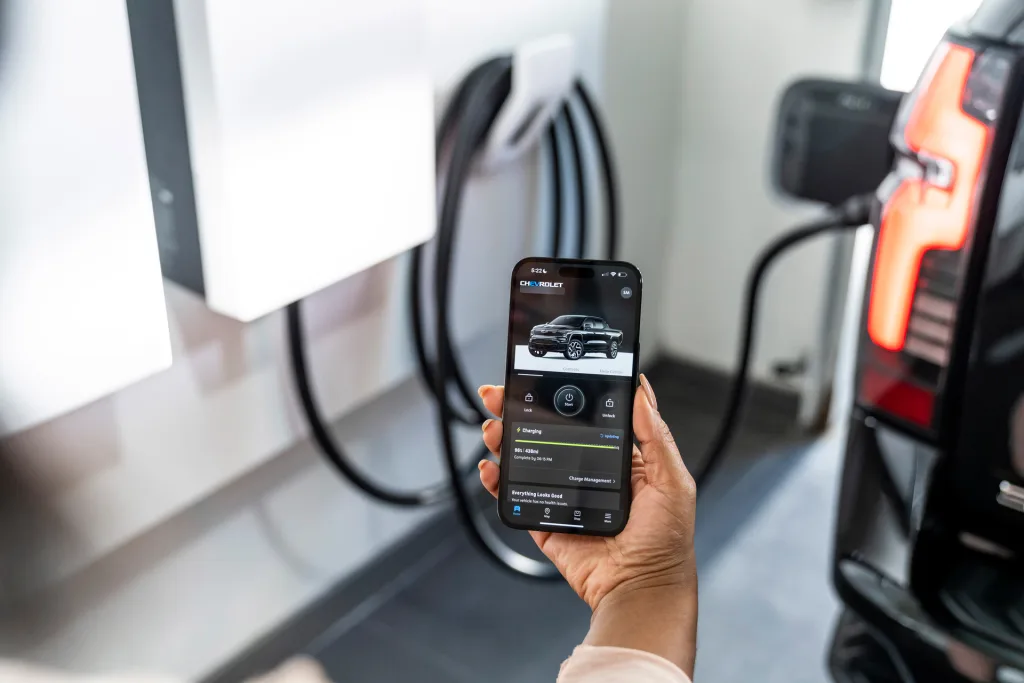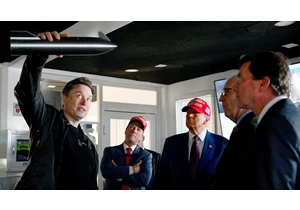A quartet of General Motors electric vehicles line the garage of a sleek Beverly Hills mansion now occupying a lot once housing Dean Martin’s digs. It’s against this backdrop of old making way for the new that subsidiary GM Energy last week demonstrated its new vehicle-to-home bidirectional (V2H) charging technology. Or in simpler terms, a system enabling EVs and homes to power one another.
The package comprises a bidirectional charger, inverter, dark start battery, and energy management hub that delivers power from an EV to a home by converting the vehicle’s DC battery power to AC power, and vice versa. A programmable app allows you to manage the energy flow to and from the home, targeting specific appliances and rooms. The dark start battery has residual energy to power the system during an outage. Together the components and vehicle can juice a house for three or four days depending on energy usage and vehicle battery size.

“It’s been a dream of ours for the last eight years to get ubiquity bidirectional charging,” says Tracy Price, founder and CEO of Qmerit, GM’s preferred installer for this system. “It’s going to change how people think about their vehicles.”
For this demo, a Silverado EV sports truck plugs into the system’s computerized mounts on the garage wall. Brent Deep, GM’s chief engineer of home charging systems, gives the green light.
“It’s ready,” he says. “Let’s do it.”

With that, electrician Matt Trout trips the circuit breaker and we’re shrouded in darkness, while Deep offers an engineering play-by-play. The dark start battery jump-starts communications to the inverter and hub, which locks out the grid (to prevent energy from seeping out). The hub then connects to the EV through the charger, prompting it to discharge battery power back through the charger, inverter, and hub, and into the house. Less than a minute later, 60 percent of the 10,000-square-foot home—including lights, sound system, and kitchen churning out hors d’oeuvres—whirs back to life, greeted by applause. We’re now on truck power.
Orchestrating those “handshakes” presented the biggest technical challenge for engineers, says Aseem Kapur, GM Energy’s chief revenue officer. “Each product is a smart device in itself, so their communication technology has to be synchronized safely.”

GM isn’t the only automotive company developing emerging V2H technology. But it’s trying to become the first to offer the most comprehensive suite with the simplest method to purchase, install, and operate. The demoed tech is the first step in a grander plan to help GM customers leverage their vehicles toward a greener system that powers homes, stores energy for weather-related power outages, saves money, and supports an increasingly taxed grid.
“With increased energy demand from AI data centers, EVs, building and heating, electrification, there’s an opportunity to create more flexibility on the grid,” says Kapur.

In a few months, GM Energy plans to offer a stackable battery bank to store excess energy up to 35 kilowatt hours that can integrate with solar installations. Although the battery bank will work with existing ones, GM has plans eventually to roll out its own solar bundle through partners. By model year 2026, all GM vehicles will be bidirectionally enabled. A version for commercial buildings is in the works. And the company is now running pilot programs to see how this system can eventually interact with the grid. “How you connect these assets to the grid remains a challenge. Utilities have not caught up with that process,” says Kapur.

The $7,299 V2H bundle charges EVs at 19.2 kilowatts. Energy can then be discharged from an EV to the home at 9.6 kilowatts and will stop when the vehicle is at 20% charge unless the user changes the settings on the EV. For now, GM Energy’s products are designed to work only in residential homes and with applicable GM EVs until the industry standard for bidirectional and vehicle-to-grid communication is finalized.
Even before a full system rollout, customers are already anticipating immediate benefits. “We have solar panels, but they don’t work during a power outage,” says Hank Smith, an Austin engineer and early adopter attending the event. “As long as I’ve got a car from General Motors, I might as well use it to power the house.”
Inicia sesión para agregar comentarios
Otros mensajes en este grupo.

Welcome to AI Decoded, Fast Company’s weekly newsletter that breaks down the most important news in the world of AI. You can sign up to receive this newsletter ever


Elon Musk’s SpaceX and two partners have emerged as frontrunners to win a crucial part of President Donald Trump’s “Golde

A new watchdog report uncovers Facebook groups quietly fueling a black market fo

A software application called Interview Coder promises to help software developers succeed at technical job interviews—by surreptitiously feeding them

Amid tariff whiplash and the rejuggling of global trade, GE Vernova’s CEO Scott Strazik is finding a way to stay “relentlessly optimistic.” Strazik returns to the Rapid Response podcast to share h

Tesla‘s electric-vehicle registrations in California dropped 15.1% during the first quarter, industry data showed, signaling an
